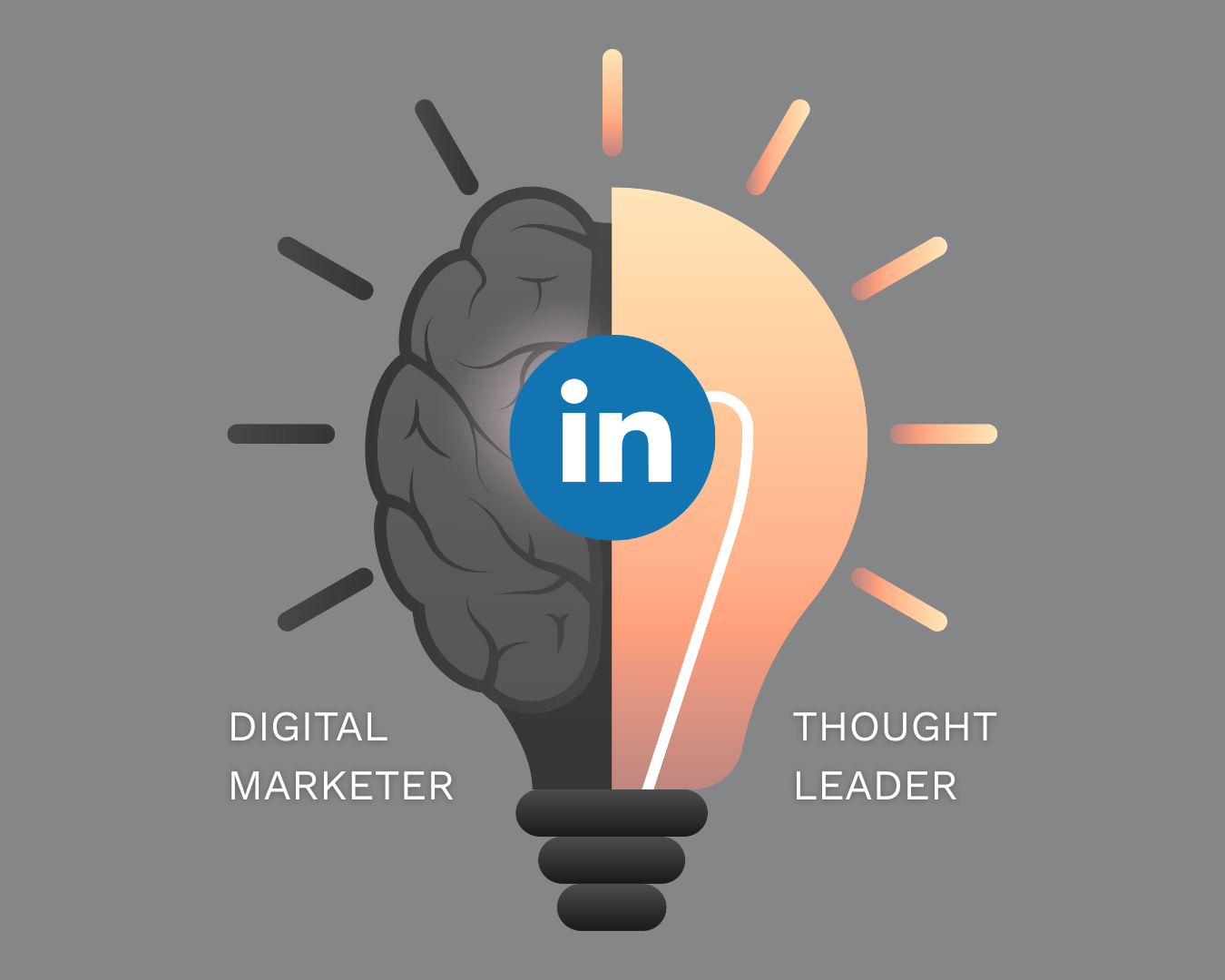Why Traditional Digital Marketing Falls Short for Thought Leaders on LinkedIn
Digital marketing is booming—$526 billion was spent globally in 2024, with projections climbing to $876 billion by 2026. It’s no secret this space is growing rapidly.
However, while digital marketing is essential, it doesn’t always work the same way for everyone—especially for experts like you building a thought leader practice. And that’s especially true when it comes to LinkedIn.
Many thought leaders come to me after investing heavily in digital marketing to manage their LinkedIn presence. They’re often frustrated. Despite all the time and money, the results just aren’t there.
When I take a look at what’s been done, the gap is instantly clear. It’s not that the agency isn’t talented—it’s that they think like digital marketers, not like thought leaders. And LinkedIn success for thought leaders requires a very different strategy.
The Thought Leader’s LinkedIn Advantage
As thought leaders, we operate differently. We're not building mass-market brands—we're building expert practices based on positioning, credibility, and quality connections. So, while traditional digital marketing strategies may work for other businesses, they often miss the mark for us.
Digital marketers are brilliant at generating clicks and managing ad spend. But they often don’t understand the nuance of personal positioning or how to nurture leads into our own ecosystem. That’s where the disconnect happens on LinkedIn.
And we need to remember—LinkedIn has its own priorities. Their focus is to keep users on the platform to drive engagement and advertising. That’s great for LinkedIn. But it doesn’t necessarily help you build the kind of business you want.
The key is to think like a thought leader—not a digital marketer, and not a LinkedIn “super user.”
5 Key Shifts for Thought Leaders on LinkedIn
To truly position yourself as a trusted authority and attract the right clients, here are five essential shifts to make:
1. Rethink Your LinkedIn Banner
LinkedIn now allows Premium users to create a rotating slideshow banner. Sounds exciting, right? However, these banners are built to keep people *on* LinkedIn—not to bring them closer to you.
As a thought leader, your banner ideally delivers one clear message that reflects your big idea. When that message rotates through five images, it dilutes your impact. And it distracts from what matters most: inviting people to connect with you directly.
So keep it simple, clear, and focused on your positioning—not LinkedIn’s features.
2. Optimise Your Title for Discovery
“I help leaders with resilience at work” might sound helpful—but it won’t help people *find* you.
Your title needs to do the heavy lifting. It should include specific, searchable keywords like “Resilience Expert” or “Keynote Speaker.” And the most important keyword should come first.
This strategy has stood the test of time. When I was Australia’s first LinkedIn profile writer back in 2010, I saw firsthand how critical titles were for visibility—and that hasn’t changed.
3. Simplify Your Featured Section
LinkedIn encourages you to fill your Featured section with lots of links, videos, and documents. That’s great for keeping users on the platform—but not so great for your business.
As a thought leader, you only need one feature front and centre: a clear “Book a Call” button. The rest is noise that makes it harder for your audience to take the next step.
Clarity gets results. And results come when your audience knows *exactly* how to connect with you.
4. Make Your About Section Client-Centric
Digital marketers will tell you to talk all about yourself here—but that’s not how thought leaders build trust.
Your About section should highlight how you solve your audience’s problems. Yes, they want to know who you are—but more importantly, they want to know how you can help them.
Lead with empathy. Position yourself as the solution. And make it easy for your ideal clients to say “yes.”
5. Be Strategic with Newsletters
LinkedIn’s newsletter feature can seem like a quick way to stay visible—but without direct email addresses, you’re not really building your list.
Plus, activating a newsletter puts you in Creator Mode, which limits your ability to connect personally with people (they can only follow you). Unless you’ve hit the 30,000 connection cap, Creator Mode can actually slow your growth.
Focus on getting contacts off LinkedIn and into your own ecosystem where you can nurture real relationships and convert leads more effectively.
Your Ecosystem Is Where Growth Happens
If your LinkedIn activity isn’t helping you strengthen your positioning, attract quality leads, or move people into your ecosystem—it’s time to reassess.
Every decision you make should answer one key question:
**“Will this grow my practice in a meaningful way?”**
If it won’t, don’t be afraid to let it go.
There’s a better way to show up on LinkedIn—one that supports your authority, attracts the right clients, and builds the thriving expert business you deserve.



